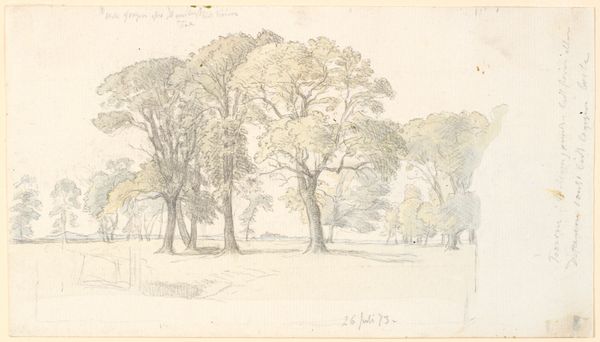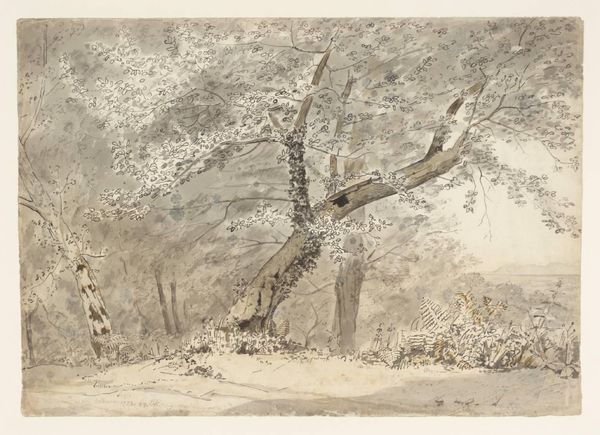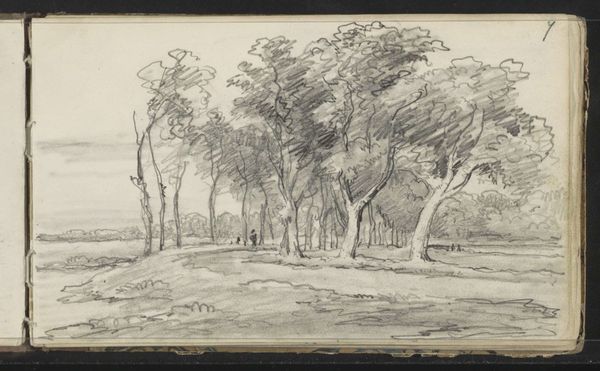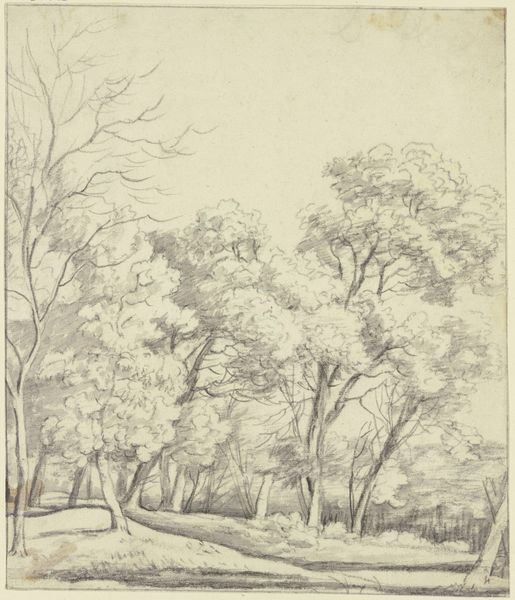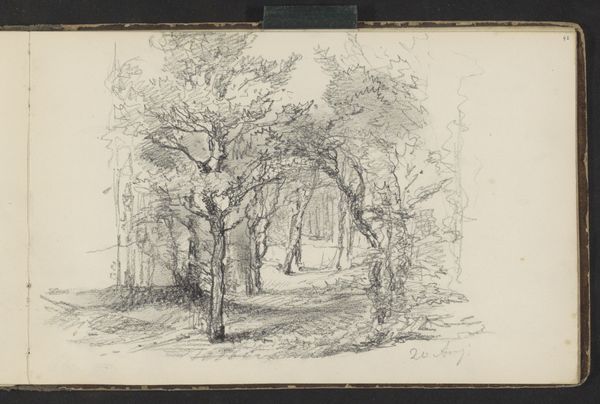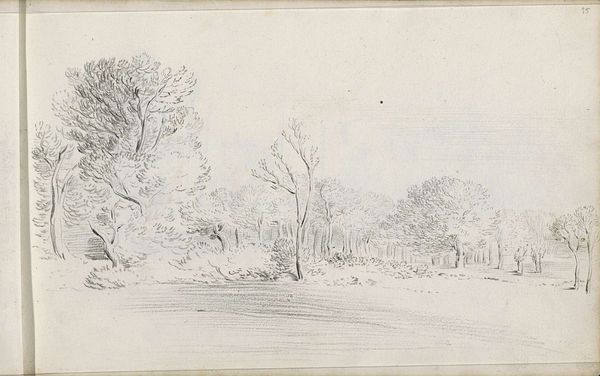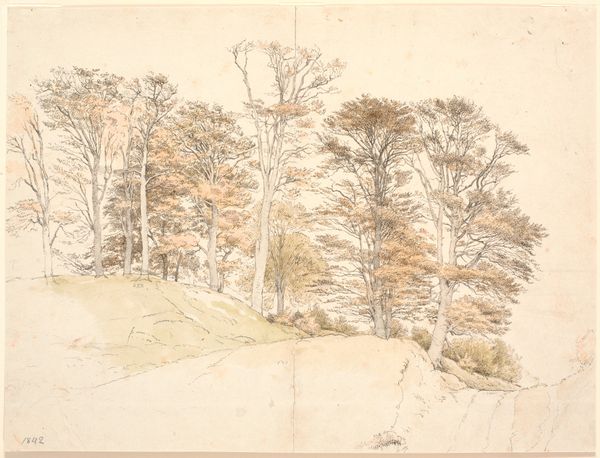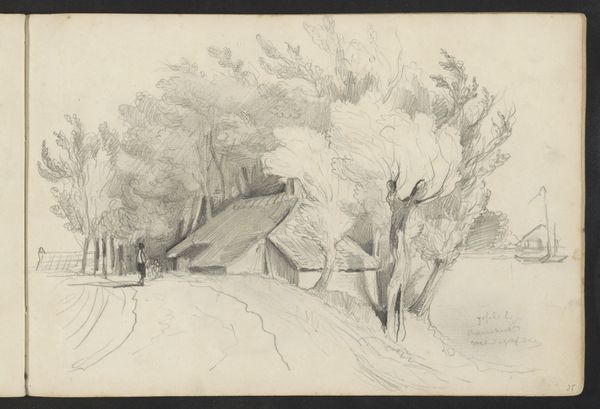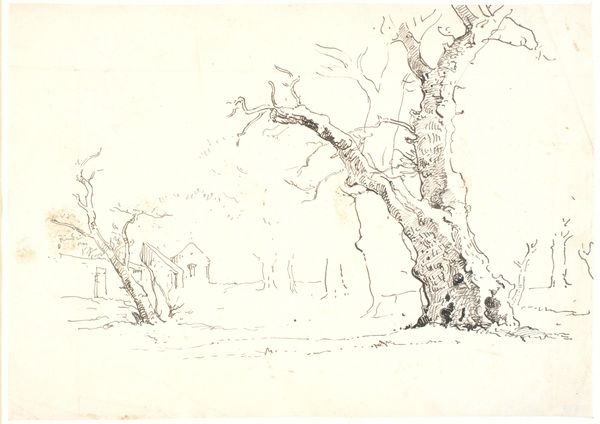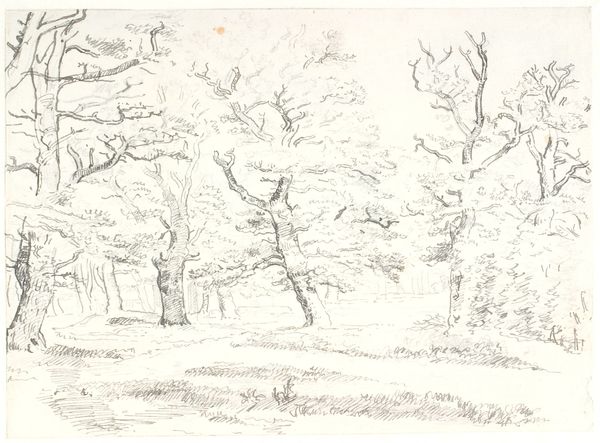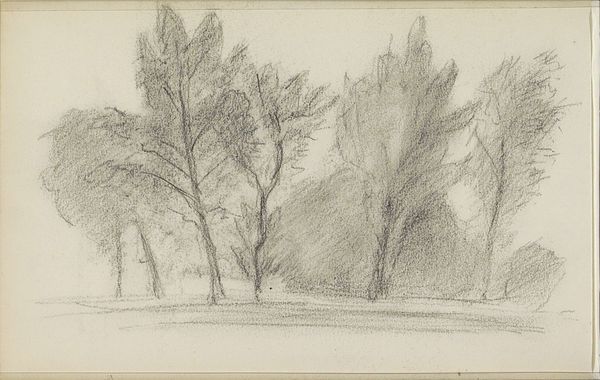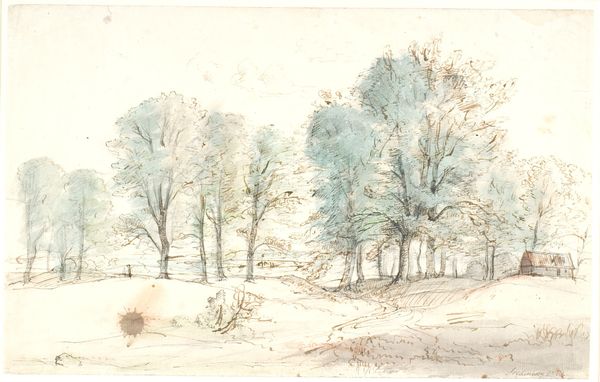
drawing, plein-air, watercolor
#
drawing
#
plein-air
#
landscape
#
watercolor
#
romanticism
#
watercolour illustration
#
watercolor
Copyright: Public Domain: Artvee
Curator: David Cox’s watercolour drawing, "Knole, Kent," likely made in the 1840s, presents a scene of the storied estate viewed through a veil of trees. Editor: My initial impression is one of delicate incompleteness. The foreground trees have only basic outlines, making the architecture in the distance—almost dissolving in the atmosphere—feel weightier and more substantial by contrast. Curator: Absolutely. Cox’s plein-air approach was revolutionary for its time, shifting the focus from studio renderings to on-site, experiential capturing of landscapes, although he surely worked up this watercolour later back in the studio. Knole itself, as a site, is laden with history. As the seat of the Sackville family for centuries, it signifies inherited power and privilege. This, juxtaposed with the drawing's almost casual, unfinished style, presents an interesting commentary. Editor: It’s curious to see which details the artist has chosen to define or elide. It’s true that a completed and meticulously detailed painting of this view would signify wealth and status. But in its incompleteness, it seems to point more toward the play of light and shadow—formal compositional values in themselves. Curator: It definitely speaks to Romanticism’s fascination with capturing the fleeting, personal experience of a landscape. We cannot divorce this perspective from considering what power structures define that experience. For example, the Sackville family has strong literary connections, perhaps their social position allowed a focus on art and culture denied to the working classes, which inevitably impacts this very artwork before us. Editor: That intersection certainly adds complexity. Looking purely at the visual construction of the watercolour illustration, I can decode Cox’s intentional choices about layering the trees and emphasizing the light reflected on parts of the distant house. The artist used restraint; these aren’t bold applications of colour but precise adjustments within a subdued palette. Curator: Cox’s technique really opens up conversations about whose histories and lived realities are given a voice, or are even deemed worthy of capturing, which is definitely relevant even now. Editor: Indeed. From a formal viewpoint and artistic handling, this approach creates an atmosphere that would certainly not exist if it was heavy with didactic meaning. Curator: It makes you wonder about other intersecting aspects that might be overlooked—questions of land ownership, class structures, and gendered expectations. Editor: For me, the genius of Cox's Knole rests not solely within socio-political narratives, but also in the evocative ability of his light-infused washes and deceptively simple composition. Curator: And so it reveals more, hopefully, each time it’s seen.
Comments
No comments
Be the first to comment and join the conversation on the ultimate creative platform.
